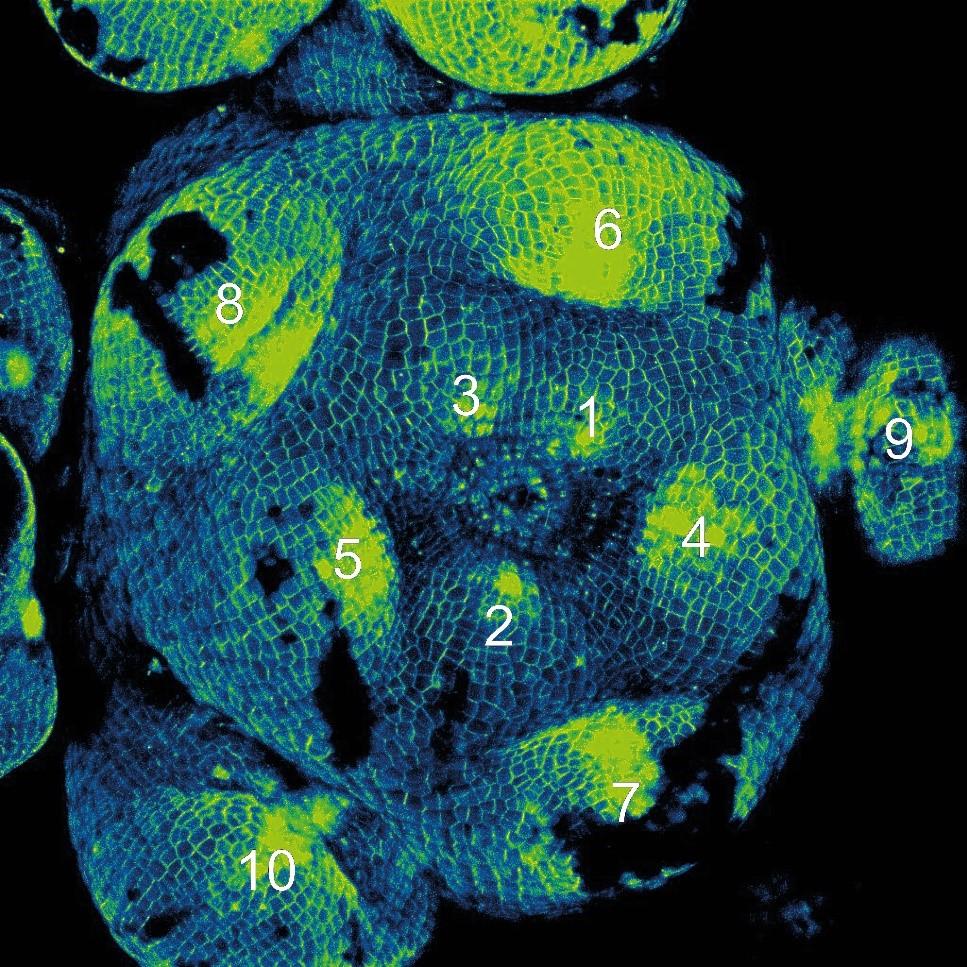
Plants present a multitude of patterns to the world. One of the most obvious and striking is phyllotaxis (from Ancient Greek phýllon meaning leaf and táxis meaning arrangement), the position of organs around the stem. In new work by PhD student Marina Linardic, in the Braybrook Group, potential patterning mechanisms for phyllotaxis in a seaweed have been explored.
Published this week in Scientific Reports, Marina’s work shows that, much like plant phyllotaxis, the organ patterning system in the seaweed Sargassum muticum is self-organising, position-dependent, can re-establish after wounding, and is not based on division patterns. This similarity is striking because the brown algae, which include Sargassum, and plants share a common ancestor that lived millions of years ago and lacked organs altogether. There are some interesting possible differences: the plant hormone auxin, which patterns plant phyllotaxis, does not appear to be a strong patterning influence in Sargassum; while cell walls of emerging new organs in plants show some softening linked to growth, this is not the case in Sargassum.
Understanding the many patterning mechanisms that nature presents us with will enrich our understanding of the natural world, but also provide an important basis for crop improvements in plants and seaweeds! The full, open-access, article may be found here: https://www.nature.com/articles/s41598-017-13767-5





